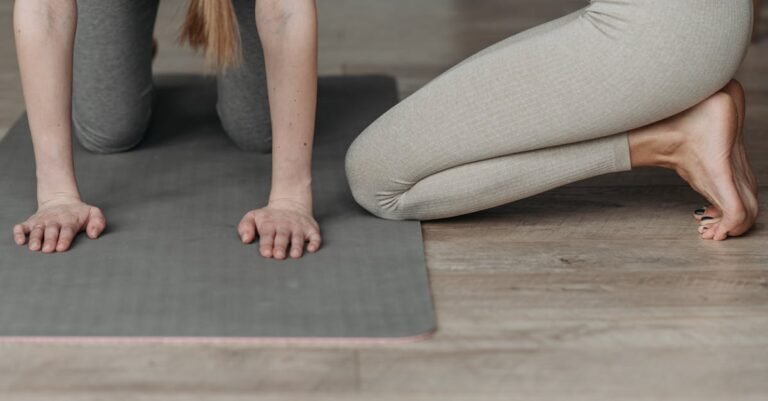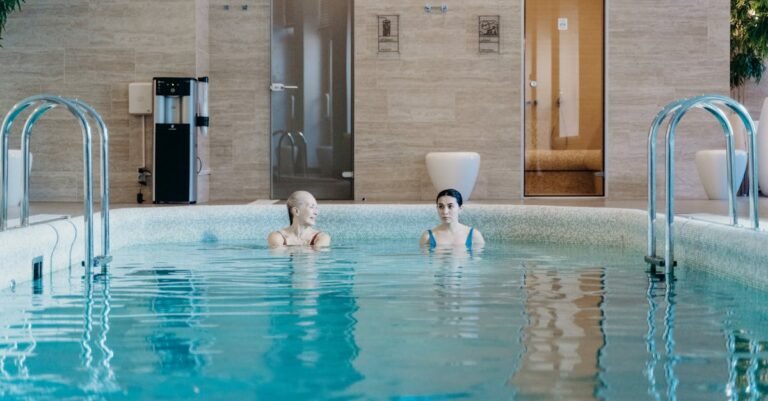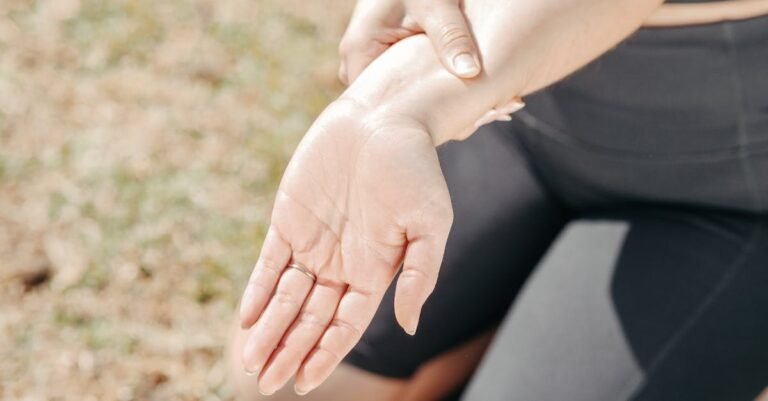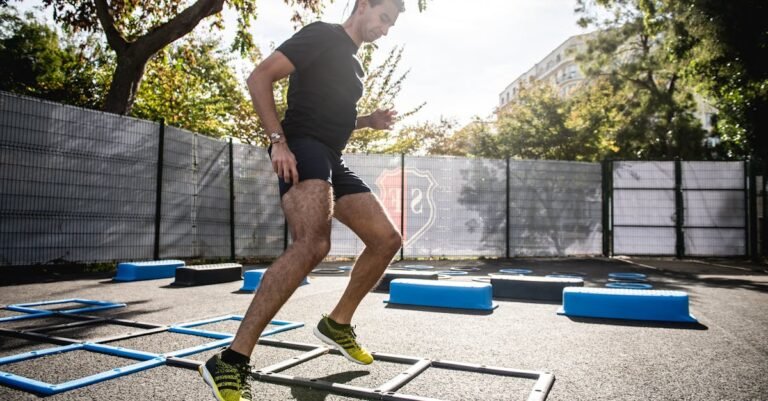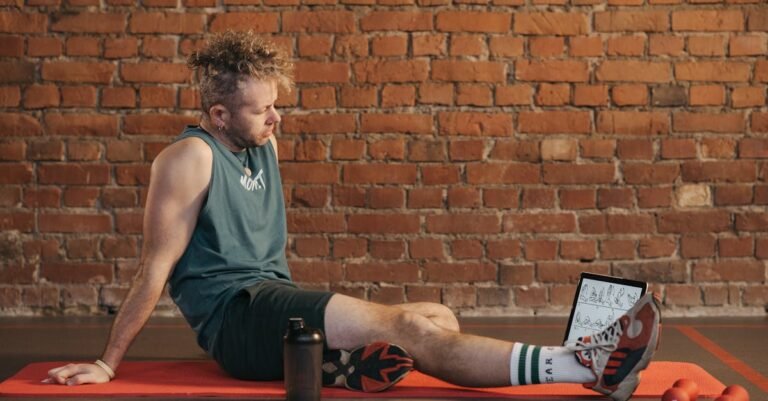Table of Contents
- Water Aerobics: Low Impact Cardio Fun
- What Exactly Is Water Aerobics?
- Why Choose Water Over Land? The Amazing Benefits
- Is Water Aerobics Right for You? (Spoiler: Probably!)
- Dipping Your Toes In: Getting Started
- Maximizing Your Splash Time: Tips for Success
- Conclusion: Take the Plunge Towards Better Health
- Frequently Asked Questions (FAQs)
Water Aerobics: Low Impact Cardio Fun
Feeling the aches and pains of high impact workouts? Knees screaming after a run? Maybe you’re just looking for a refreshing change of pace in your fitness routine? Well, have I got something fantastic for you! Let’s dive into the wonderful world of water aerobics – a workout that’s kind to your body but seriously effective for your health.
Forget grueling gym sessions that leave you feeling beat up. Imagine moving, stretching, and getting your heart rate up, all while being gently supported by water. Sounds pretty good, right? Water aerobics is exactly that: a fantastic blend of cardiovascular exercise, strength training, and flexibility work, all done in the forgiving environment of a swimming pool. It’s like getting a great workout without feeling like you’ve gone ten rounds with a heavyweight boxer!
What Exactly Is Water Aerobics?
Okay, so what are we actually talking about here? Is it just jumping around in the shallow end? Not quite, though there’s definitely some fun movement involved! Water aerobics, sometimes called aqua aerobics or aquatic fitness, is essentially performing aerobic exercises in water, usually chest deep or shallower.
More Than Just Splashing Around
Think of it like a traditional aerobics class, but submerged! Instructors guide participants through a variety of movements like jogging in place, jumping jacks (aqua jacks!), leg lifts, arm curls, and torso twists. Often, music adds rhythm and energy to the class. You might also use equipment like buoyant foam dumbbells, noodles, or kickboards to add resistance or support, making the workout even more versatile.
The key difference, and the magic ingredient, is the water itself. It provides a unique environment that changes how your body experiences exercise. You’re working against the water’s natural resistance, but you’re also being supported by its buoyancy. It’s a fascinating combination!
The Science Behind the Buoyancy Magic
Let’s get slightly technical, but stick with me – it’s cool! Remember Archimedes’ principle from school? An object submerged in fluid is buoyed up by a force equal to the weight of the fluid displaced. In simpler terms, the water pushes up on you, making you feel lighter. When you’re chest deep in water, you’re effectively bearing only about 25-35% of your actual body weight! Isn’t that amazing?
This buoyancy is the secret sauce behind water aerobics’ low impact nature. It significantly reduces the stress and jarring impact on your joints – hips, knees, ankles, spine – compared to land based exercises like running or jumping. This makes it an incredibly accessible form of exercise for a huge range of people.
Why Choose Water Over Land? The Amazing Benefits
So, why trade your running shoes for a swimsuit? The advantages of taking your workout to the water are numerous and compelling. It’s not just about being gentle; it’s about getting a surprisingly robust and well rounded fitness experience.
Kind to Your Joints: The Low Impact Advantage
This is the big one, the headliner! As we just discussed, buoyancy drastically reduces the impact on your joints. Think of it like exercising on a cloud, but with added resistance. If you suffer from arthritis, joint pain, osteoporosis, or are recovering from an injury, water aerobics can be a game changer. It allows you to move, strengthen muscles, and improve cardiovascular health without aggravating sensitive joints. You can get a great workout without the post exercise aches and pains often associated with land based cardio.
A Sneaky Full Body Workout
Don’t let the low impact nature fool you – water aerobics provides a fantastic full body workout. The water’s resistance works muscles you might not typically engage in land exercises. Every movement – pushing, pulling, kicking, sweeping – forces your muscles to work against that constant, gentle pressure. You’re engaging your core to stay stable, working your legs as you move through the water, and using your arms for various exercises, often incorporating resistance equipment. It’s a holistic way to tone and strengthen from head to toe.
Boosting Your Cardiovascular Health
Yes, you can absolutely get your heart rate up and improve your cardiovascular fitness in the pool! Aerobic exercise is all about sustained activity that increases your heart rate and breathing, strengthening your heart and lungs over time. Water aerobics achieves this beautifully.
Heart Pumping, Not Joint Pounding
Moving against the water’s resistance demands effort from your cardiovascular system. You’ll find yourself breathing harder and your heart pumping faster, just like during a brisk walk or light jog. The difference? No pounding on the pavement! Plus, the water has another trick up its sleeve: hydrostatic pressure. This is the pressure exerted by the water on your body. It can actually help improve circulation and venous return (blood flow back to the heart), potentially making your heart work more efficiently during the exercise.
Building Strength and Endurance Naturally
Water provides natural resistance in all directions. Unlike lifting weights where resistance is primarily in one direction (against gravity), in the pool, every movement meets resistance. Pushing your arms forward? Resistance. Pulling them back? Resistance. Kicking? Resistance. This multi directional resistance helps build muscular strength and endurance throughout your body.
Harnessing Water’s Resistance Power
Water is about 12 times denser than air. Imagine trying to walk quickly through waist deep water versus walking on land – you feel the difference immediately! This resistance means your muscles have to work harder than they would performing the same movements on dry land. You can intensify this by moving faster, using larger movements, or adding aquatic equipment like foam dumbbells or resistance gloves. It’s like having built in weights that adjust to your effort level.
Improving Flexibility and Range of Motion
The support of the water allows you to move your joints through a wider range of motion than you might be comfortable doing on land. The warmth of the water (in heated pools) can also help relax muscles, making stretching easier and more effective. Improved flexibility helps with daily activities, reduces the risk of injury, and can alleviate stiffness.
Is Water Aerobics Right for You? (Spoiler: Probably!)
One of the most beautiful things about water aerobics is its incredible inclusivity. While it’s often associated with specific groups, the reality is that almost anyone can benefit from adding it to their routine.
A Haven for Seniors
Water aerobics is exceptionally popular among older adults, and for good reason. It provides a safe, effective way to maintain cardiovascular health, muscle strength, balance, and flexibility without the high risk of falls or joint strain associated with many land based activities. The social aspect of group classes is also a significant benefit for many seniors.
Rehabilitation and Recovery Support
Physical therapists often recommend aquatic therapy or water aerobics for individuals recovering from surgery (like joint replacements) or injuries. The buoyancy allows for early mobilization and exercise, strengthening supporting muscles without putting undue stress on the healing area. It helps regain function and confidence in movement.
Easing Chronic Pain Conditions (like Arthritis)
For people living with chronic pain conditions such as arthritis, fibromyalgia, or back pain, water aerobics can be a lifeline. The reduced impact and supportive environment allow for movement that might be too painful on land. Exercise is crucial for managing these conditions, and water provides a way to stay active, reduce stiffness, and improve overall well being.
A Safe Option for Expectant Mothers
Pregnancy brings many physical changes, and finding safe, comfortable exercise can be challenging. Water aerobics is often recommended for pregnant women. The buoyancy relieves pressure on the back and joints, reduces swelling, and helps maintain fitness levels throughout pregnancy without the risk of overheating or falling.
Fitness Fun for Everyone Else
Seriously, it’s not just for the groups above! Are you an athlete looking for low impact cross training? Someone overweight or obese seeking a comfortable way to start exercising? Maybe you’re just bored with your current routine and want something fun and different? Water aerobics fits the bill. It’s a fantastic way to burn calories, improve fitness, and just enjoy moving your body in a refreshing environment.
Dipping Your Toes In: Getting Started
Feeling tempted to take the plunge? Getting started with water aerobics is usually quite straightforward.
Finding Your Watery Workout Space
Check local community centers, YMCA/YWCAs, fitness clubs, and public swimming pools. Many offer water aerobics classes included with membership or available for a drop in fee. Look for class descriptions that match your fitness level – some might be gentler, while others are higher intensity. You can also simply use a pool on your own, performing basic moves if classes aren’t available or convenient.
What to Wear and Bring
You don’t need much fancy gear:
- Swimsuit: Choose one you feel comfortable moving actively in.
- Water Shoes (Optional but Recommended): These provide traction on the pool bottom and protect your feet.
- Towel: Obvious, but essential!
- Water Bottle: Yes, you need to hydrate even when surrounded by water!
- Goggles (Optional): If you’re sensitive to splashing or pool chemicals.
- Swim Cap (Optional/Sometimes Required): Protects your hair and keeps it out of your face.
Most classes provide any necessary equipment like noodles or dumbbells, but check beforehand if you’re unsure.
Common Moves You Might Encounter
While classes vary, you’ll likely see some recurring movements:
- Water Walking/Jogging: Forward, backward, sideways.
- Jumping Jacks: Modified for the water.
- High Knees: Bringing knees up towards the chest.
- Butt Kicks: Bringing heels back towards your glutes.
- Leg Kicks: Forward, backward, sideways.
- Arm Curls/Presses: Using water resistance or foam dumbbells.
- Sculling/Treading Water: Using arms and legs to stay afloat or move.
- Noodle Exercises: Using a pool noodle for support or resistance (e.g., tuck jumps, seated leg lifts).
Don’t worry if you don’t know them all – instructors demonstrate everything, and the focus is usually on participation and effort, not perfect form initially.
Maximizing Your Splash Time: Tips for Success
Ready to make the most of your aquatic workouts? Keep these simple tips in mind.
Tune In To Your Body’s Signals
While water aerobics is low impact, it’s still exercise. Pay attention to how you feel. If something hurts (beyond normal muscle fatigue), ease up or modify the movement. The beauty of water is that you can easily adjust the intensity. Move slower or make smaller movements if needed. Conversely, if you want more challenge, move faster, make bigger movements, or use resistance equipment.
Hydration is Key (Even Surrounded by Water!)
It sounds counterintuitive, but you can get dehydrated during water exercise. You’re sweating, even if you don’t feel it as much because the water keeps you cool. Keep a water bottle at the edge of the pool and take sips before, during (if possible), and definitely after your session.
Remember the Fun Factor!
Seriously, water aerobics should be enjoyable! The water itself often feels playful. Many classes have upbeat music and a friendly, social atmosphere. Embrace the splashing, enjoy the feeling of lightness, and don’t take yourself too seriously. When exercise feels like fun rather than a chore, you’re much more likely to stick with it.
Conclusion: Take the Plunge Towards Better Health
So, there you have it – the lowdown on water aerobics. It’s far more than just a gentle splash about; it’s a versatile, effective, and incredibly accessible form of exercise with a boatload of benefits. From boosting your heart health and building strength to being kind on your joints and improving flexibility, it truly offers something for almost everyone.
Whether you’re a seasoned fitness enthusiast looking for low impact cross training, someone starting their fitness journey, managing chronic pain, or recovering from an injury, water aerobics provides a supportive and refreshing environment to move your body and improve your health. Why not find a local class and give it a try? You might just discover your new favorite way to stay fit and have fun doing it. Go on, take the plunge!
Frequently Asked Questions (FAQs)
1. Do I need to be a good swimmer?
Absolutely not! Most water aerobics classes are held in the shallow end of the pool where you can comfortably stand with your head well above water (usually chest deep). Swimming ability is generally not required. Deep water classes exist, but they typically use flotation belts for support.
2. How many calories can I burn?
Calorie burn varies greatly depending on factors like your weight, the intensity of the class, the water temperature, and how much effort you put in. However, you can generally expect to burn between 300 to 500 calories per hour in a moderate intensity water aerobics class. The water’s resistance often means you’re working harder than you might realize!
3. What if I have mobility issues?
Water aerobics is often ideal for people with mobility issues! The buoyancy reduces stress on joints, making movement easier. Always inform the instructor about any limitations before class so they can suggest modifications. Many pools also have ramps or lifts for easy entry and exit.
4. Is it just for older people?
Definitely not! While it’s very popular among seniors due to its low impact nature, water aerobics is beneficial for all ages and fitness levels. Many classes are quite challenging and attract a diverse range of participants looking for a fun, effective workout.
5. Can water aerobics help with weight loss?
Yes, it certainly can! Weight loss happens when you burn more calories than you consume. Water aerobics burns a significant number of calories and helps build muscle mass (which boosts metabolism). Combining regular water aerobics sessions with a healthy diet can be an effective strategy for weight management.


